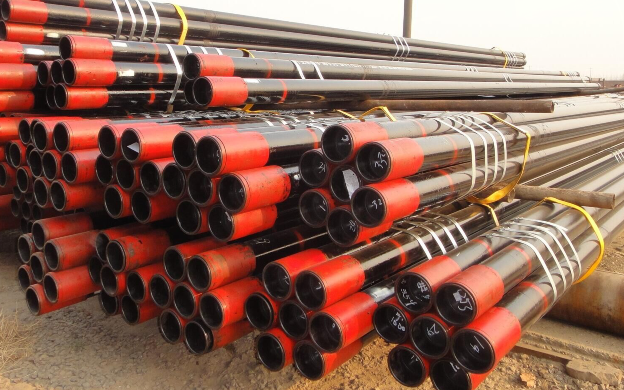
OCTG Casing Impressed Current Cathodic Protection Method
Impressed current cathodic protection method for outer wall of OCTG casing pipe:
Oil well casing is an additional layer of protection in order to protect the internal main oil pipeline from being squeezed by the stress of the external stone and soil layers and enhance its transportation stability. Since oil wells are thousands of meters deep underground, the deep soil casing is under tremendous pressure. With the long-term use of pipelines, after a minimum of 16 months and a maximum of 5 years, the oil well casing will suffer from corrosion, holes, staggering, deformation, rupture, severe and even damage to varying degrees. This can cause significant losses to the well's performance.
In oil production areas, there is corrosion on both the inner and outer walls of oil wells and water injection wells. With the operation of oilfield production, the soil moisture content of the outer wall increases year by year, and the corrosion of downhole pipe strings becomes increasingly serious. In order to better solve the corrosion problem of the outer wall of oil well casing, people in the anti-corrosion field at home and abroad recognize the use of cathodic protection, believing it to be the most economical, reasonable and very effective technical measure.

Cathodic protection technology can not only prevent corrosion of newly built oil well casings, but is also very effective on existing old oil well casings, extending their service life and reducing the number of replacements.
Since the oil and water well casings are thousands of meters deep into the underground strata, the application of sacrificial anodes is subject to certain restrictions, and only the impressed current method can be used for cathodic protection.
The impressed current cathodic protection method uses an external DC power source to cathodicly polarize the steel casing to reach the required protection potential value, thereby achieving cathodic protection. The impressed current cathodic protection system is composed of auxiliary anode, reference electrode, DC power supply and related connecting cables and protected objects.
There are generally two structural forms of cathodic protection systems for oil well casing:
One is to provide protective current to the casing in separate wells and implement cathodic protection. Each well is provided with insulation measures from other wells so that the current can be concentrated to protect the single well. This kind of system saves electricity, is easy to realize automatic control, and is easy to check faults and repair. The disadvantage is that it requires a large investment. The other is to connect the underground metal structures in the protection area together and perform regional cathodic protection in a unified manner. This system has the advantage of reducing the number of control systems and saving investment. The disadvantage is that the protection current is not easy to distribute evenly, the anode layout is strictly required, and it is difficult to detect faults.
The choice of these two structural forms should be based on the spacing of each oil well, the specific conditions of the oil field station and the owner's requirements.
Cathodic protection for oil well casing has the following characteristics:
Due to the depth of the oil well and the complex environment it faces, the impressed current protection method in cathodic protection must be used to effectively ensure the cathodic protection efficiency of the oil well casing. Secondly, in order to cope with the pressure of deep soil layers and possible corrosive environments, deep well-type anodes must be used as auxiliary anodes in the impressed current method. Deep well anodes have the advantages of being less affected by climate, stable grounding resistance, small stray current interference, small footprint, long service life, and easy installation. They are suitable for situations with dense pipe networks and harsh working conditions.
In practical applications, in areas with many or dense oil wells, one deep anode well is required for every two to four wells to serve as the anode end of the cathodic protection system. Deep anode wells are usually located near several oil wells to ensure that the cathodic protection current can cover all oil wells within the range.
Finally, based on the above two points, the impressed current cathodic protection of oil wells must also use a customized potentiostat to provide sufficient, appropriate cathodic protection current. The cathodic protection current will be emitted by the potentiostat, flow to the anode deep well as the anode section, and then be transported through the soil to several nearby oil well casings, where it will become the cathode and thus protected, and finally return to the constant potential from the wellhead confluence point on the surface instrument, forming a complete closed loop.
Read more: Causes and Preventive Measures of Oil and Water Well Casing Damage


